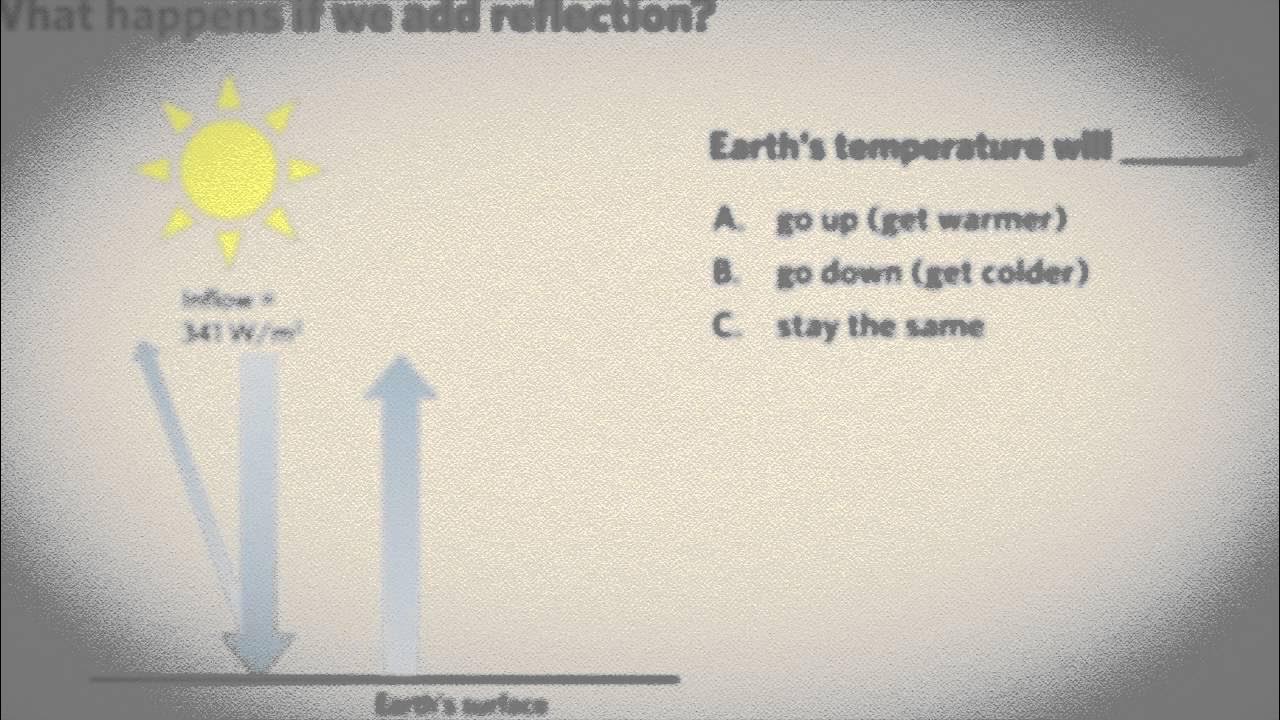5.3 Climate Model Output
Summary
TLDRThis lesson explores the outputs of climate models, highlighting their utility in predicting future climate variables such as temperature and sea level. It discusses the comparison of model outputs to historical observations, emphasizing the importance of multiple model runs for increasing confidence in predictions. Key findings include the limitations of past models in projecting sea ice loss and sea-level rise, and how more accurate representations of climate processes can improve future forecasts. Ultimately, effective climate modeling helps inform adaptation and mitigation strategies for communities facing climate change.
Takeaways
- 🌍 Climate models help estimate future climate variables like temperature and sea level, providing a range of possible outcomes.
- 📈 Historical observations indicate that models can reproduce long-term climate trends, but they may not align perfectly each year due to natural variability.
- 🌋 Significant volcanic eruptions can be modeled to show their cooling effects, which are reflected in both observations and model outputs.
- 🔄 Using multiple models and runs enhances the reliability of climate predictions by capturing a wider range of possibilities.
- 🌞 Recent warming trends cannot be solely attributed to natural factors like solar variability and volcanic eruptions; human activities play a significant role.
- 📉 Hansen's 1988 projections revealed different pathways for greenhouse gas emissions, with actual emissions closely following a scenario of slower growth.
- 📊 Model revisions are essential as new data becomes available, particularly concerning climate sensitivity values.
- ❄️ Arctic sea ice extent projections show that models have underestimated the rate of decline compared to real-world data.
- 🔍 Continuous assessment of model accuracy against historical data increases confidence in future forecasts.
- 🛠️ Accurate climate models are crucial for informing mitigation and adaptation strategies for communities facing climate change.
Q & A
What is the primary purpose of climate models?
-Climate models are used to estimate different climate variables, such as temperature and sea level, at future times, representing a range of possibilities with varying likelihoods.
How do climate models compare to actual temperature observations?
-Climate models, represented by yellow lines in the transcript, track actual temperature anomalies fairly well over time, with some differences due to natural year-to-year variability.
What role do volcanic eruptions play in climate models?
-Volcanic eruptions emit sulfates that cause temporary cooling effects, which can be observed in both climate models and actual temperature data following these events.
Why is it important to use multiple models and runs in climate projections?
-Using multiple models and runs allows for capturing a broader range of possibilities and increases confidence in the model outputs, rather than relying on a single model's output.
What were James Hansen's projections in 1988?
-Hansen provided three future scenarios for greenhouse gas emissions: scenario A (exponential growth), scenario B (slowing growth), and scenario C (decreasing emissions).
Which of Hansen's scenarios did actual emissions most closely follow?
-Actual greenhouse gas emissions came closest to following scenario B, which predicted a slowing growth rate but continued increases in emissions.
How did the climate sensitivity value in Hansen's model impact its projections?
-Hansen's model used a higher climate sensitivity value, resulting in higher future temperature estimates compared to more recent models that use a lower central value.
What mismatch exists between climate models and observed sea ice extent?
-Models showed a decline in Arctic sea ice but were conservative, underestimating the steep decline that has occurred in recent decades.
What components did the IPCC fail to incorporate in their 1990 projections?
-The IPCC did not adequately account for some components of ice melt on land, leading to conservative estimates of sea-level rise.
What is the significance of the climate model reproducing historical observations?
-If a climate model can accurately reproduce historical observations, it suggests that the model is likely to provide reasonable forecasts for future climate scenarios.
Outlines

Esta sección está disponible solo para usuarios con suscripción. Por favor, mejora tu plan para acceder a esta parte.
Mejorar ahoraMindmap

Esta sección está disponible solo para usuarios con suscripción. Por favor, mejora tu plan para acceder a esta parte.
Mejorar ahoraKeywords

Esta sección está disponible solo para usuarios con suscripción. Por favor, mejora tu plan para acceder a esta parte.
Mejorar ahoraHighlights

Esta sección está disponible solo para usuarios con suscripción. Por favor, mejora tu plan para acceder a esta parte.
Mejorar ahoraTranscripts

Esta sección está disponible solo para usuarios con suscripción. Por favor, mejora tu plan para acceder a esta parte.
Mejorar ahoraVer Más Videos Relacionados

Climate Research & Anthropogenic Climate Change

Modeling Our Climate

GCSE Chemistry - Global Warming & Climate Change

CDRA 2: Scoping the Potential Impacts of Disasters and Climate Change

Iklim Wilayah Indonesia: Tropis, Muson, dan Laut (serta Perbedaan antara Iklim dan Cuaca)

5.1 Introduction to Climate Modeling
5.0 / 5 (0 votes)
